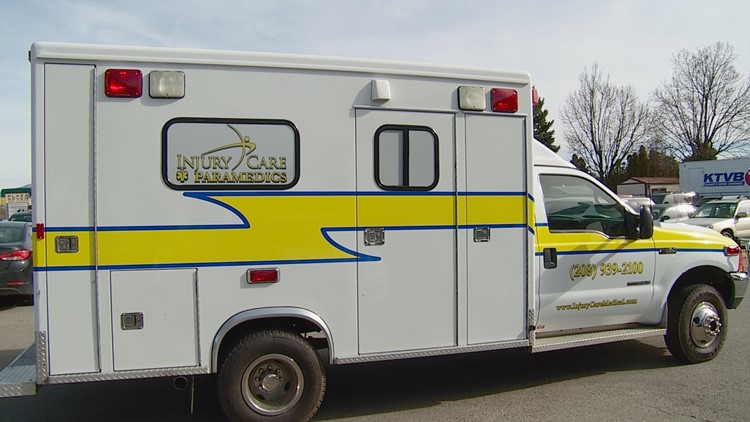2021 Cost Information for Ambulance (Ground) Services Note: Visit our Copayment and Cost-Share Information page to view 2020 costs. TRICARE Select, TRICARE Young Adult Select, TRICARE Reserve Select, and TRICARE Retired Reserve annual deductibles apply. Either you or your ambulance company may request prior authorization for these scheduled, non-emergency ambulance services. If your prior authorization request isn’t approved and you continue getting these services, Medicare will deny the claim and the ambulance company may bill you for all charges. For more information, call us at 1-800.
Transportation as well as air ambulance transportation when appropriate for the patient’s condition. + Under both – Standard and Basic - Options, members pay a $100 copayment per day for ground ambulance services performed by both Preferred and Non-preferred ambulance providers. + For air or sea ambulance transportation.
Will your health insurance pay for an ambulance ride?
You need an ambulance — how much it will cost is probably far from your mind until you get the bill. Many health insurance policies cover ambulance rides for medical emergencies. But if you get on board, you could end up paying more than you’d expect.
Where are you going?
Where your ambulance driver takes you could raise your bill. If you are a Medicare recipient, Medicare generally pays 80 percent of the Medicare-approved amount if you’ve met your Part B deductible. That means you will generally pay 20 percent of the cost as well as any remaining deductible. If you have a GAP policy, that may pick up the 20 percent depending on the plan.
BUT, in some cases, Medicare may not pick up the tab.
Medicare cites two reasons why you might be left with the bill:


- Even though a nearby facility has the means to care for you, you direct the ambulance driver to take you to a facility that is farther away.
- You use an ambulance to move from one facility to another based on convenience (the second facility is closer to your family, for example).
Private health insurance plans may have similar requirements.
- Be sure to ask whether you must be taken to the closest facility (rather than one of your choice).
- Ask about how your coverage will be affected if you need to be transferred to a different hospital because the first is at capacity or doesn’t actually offer the care that you need.

Ambulance Company Va
Keep in mind that even if your ambulance trip is covered, your emergency care might not be. If the ambulance takes you to an out-of-network hospital (a hospital that does not have a contract with your insurer), you may end up with some high out-of-network bills. Unfortunately, if you’re in the position to need an ambulance, you may not be able to control where you end up. What happens next depends on your insurance company.

Notify your insurance carrier within 24 hours of admission into an out-of-network hospital. You may be able to negotiate an in-network fee.
Who’s driving?
Ambulance Copayment Ontario

Just as hospitals can be “in network” or “out of network,” so can ambulance providers. This can lead to problems when the ambulance that shows up to rush you to the hospital is not within your insurer’s coverage network. Dispatchers often make the choice of which emergency service provider gets sent based on location and availability. Unfortunately for many patients, there may not even be an in-network ambulance provider in the area. The best recourse is to negotiate with your insurance company — getting an in-network rate can reduce an ambulance bill by 30 percent to 35 percent.
Emergency vs. non-emergency care
When you’re hurt or feeling ill, your initial reaction might be to call 911. But if your insurance provider thinks you jumped the gun and your ambulance ride wasn’t medically necessary, you could end up paying more for it.
For most insurance companies, an ambulance ride is considered medically necessary when any other method of transportation is inadvisable.
- Severe pain, bleeding, state of shock or unconsciousness.
- The need for oxygen or other skilled medical treatment during transport.
- The need to be restrained to keep you from hurting yourself or others.
If the care is not considered an emergency by your insurer, things get more complicated. Some insurers, for example, require that those who use ambulances for non-emergency transportation pay 20 percent co-insurance in addition to whatever remains of the annual deductible. When it comes to Medicare, meanwhile, the ambulance provider might require you to sign what’s called an “Advance Beneficiary Notice” if it suspects your situation is not an emergency. Signing this form means you’ll have to pay if Medicare refuses.
Don’t panic if you need an ambulance … just heed notice that you’re sure this is an emergency!
